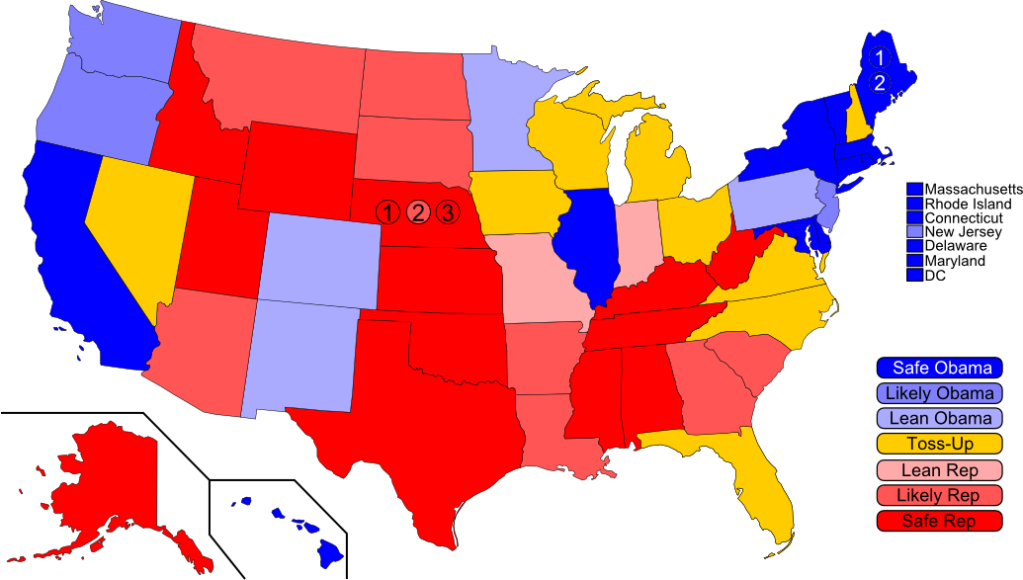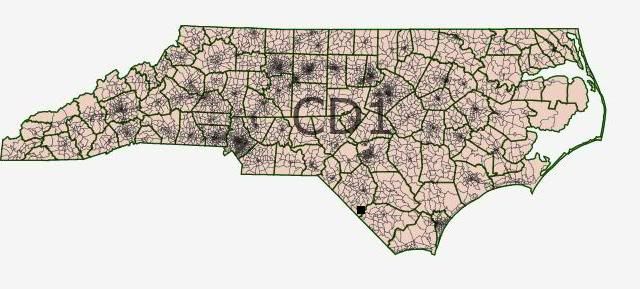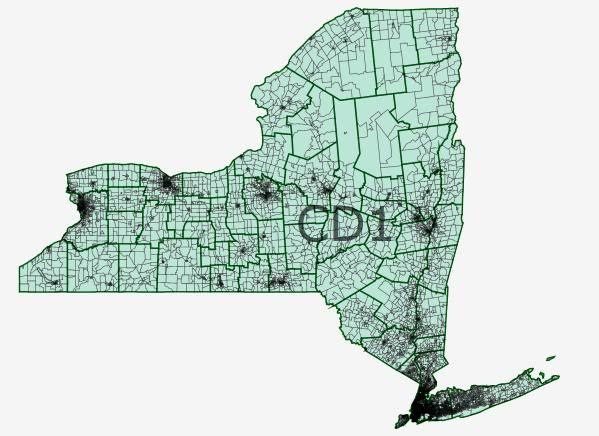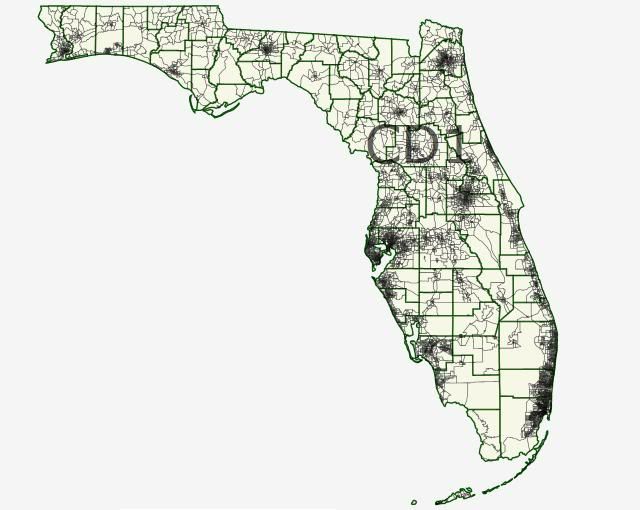An absolutely mammoth-sized digest for your enjoyment today. You can return the favor by following us on Twitter or liking us on Facebook!
• FL-Sen: Remember that beyond-pathetic non-book that Mike Haridopolos “wrote” for Brevard Community College – a work so bad that the school was too embarrassed to ever even publish it? (Sample observation: politicians should carry cell phones. Political GOLD.) Actually, I lied – it’s now available to anyone with a Kindle and enough ingrown stupidity to spent $9.99 on it. But none of this, believe it or not, is even the reason for this bullet. Rather, the Miami Herald points out that in 2006 and 2009, Haridopolos directed a total of $3.1 million in the state budget toward none other than Brevard Community College. Payback for that payback sure is turning out to be a bitch, huh?
• HI-Sen: KHON2 has a rundown of the federal bank accounts of potential contenders for Dan Akaka’s now-open Senate seat. Here’s one odd thing: Charles Djou still has a quarter million bucks left over. What on earth did he do that for?
• MA-Sen: Mutual fund executive Robert Pozen says he isn’t running for Senate – “unless the Democratic Party asks me to.” Considering he served as an advisor to Mitt Romney and worked on a George W. Bush Social Security panel which recommended privatization, I’m gonna guess that he’ll be waiting by the phone for quite a while.
• MI-Sen: In response to a Facebook page trying to draft him, a spokesman for uber-teabagger Justin Amash says that he “is not contemplating a Senate run.” This also confirms a pet theory of mine, which is that if you want to grab a candidate’s attention and get him or her on the record as to whether they’ll seek a higher office, all you need to do is create a Facebook page, sign up a few people (Amash’s has just 130 “likes”), and spread the word a bit (either to the media or the candidate directly) – and bam, you’ll get an answer.
• NJ-Sen: Several states to the east, another teabagger favorite – one with a lot less to lose – is steeping a different bag of darjeeling. Anna Little, who lost to Rep. Frank Pallone last year after upsetting a wealthy establishment-type candidate in the GOP primary, says she’s considering a run against Bob Menendez. She’s previously said she wants to take on Pallone in a rematch, so who knows what she’ll wind up doing.
• NM-Sen: Alright, it’s not quite the horse’s mouth, but politically speaking, it’s just as good: A spokesperson for Republican Lt. Gov. John Sanchez says his boss is “seriously considering” running for Senate. He’d provide a conservative alternative to Heather Wilson (who made her entry official today), and he’s also personally wealthy and has self-funded in the past.
• NV-Sen: This would make life a hell of a lot more interesting: Lt. Gov. Brian Krolicki, who contemplated a Senate run last cycle, says he’s considering a bid to succeed John Ensign. The fact that Krolicki is openly declaring this suggests to me he’s not afraid of going head-to-head with Rep. Dean Heller in the GOP primary – and that perhaps the idea of Heller being some kind of Republican steamroller is a bit overblown.
• OH-Sen: We’ve mentioned this guy before, but the WaPo has a longish profile of 33-year-old Republican state Treasurer Josh Mandel, who won election just last year and hasn’t ruled out a Senate run. The piece claims that Mandel has cross-party appeal, but it also quotes a teabagger leader who says Mandel is “just great on the issues and has been right from the start.” Both of these things cannot be simultaneously true.
Somewhat related, Greg Giroux helpfully provides a breakdown of last year’s gubernatorial and senate results from Ohio by congressional district.
• RI-Sen, RI-01: Scott MacKay at WNRI (a local NPR station) has a helpful backgrounder on Brendan Doherty, the state police chief who abruptly announced his resignation the other day and is thought to be contemplating a run for federal office this cycle. MacKay makes the argument that Rep. David Cicilline may present a more tempting target than Sheldon Whitehouse, largely due to the fallout from Providence’s financial troubles (the city where Cicilline was mayor until getting elected to the House).
• TX-Sen: I don’t think it’ll move any votes, but it’s a signal: Sen. Mike Lee of Utah – who may represent the purest, most highly distilled strain of teabagger – just endorsed Ted Cruz for Senate. But note the item just below – Lee won’t endorse his fellow Utahn Orrin Hatch for re-election.
• UT-Sen: While we’re on the theme of Utah and teabaggers, I actually think Orrin Hatch is being pretty smart here, Lee’s non-endorsement non-withstanding. I mean, his attempts to prove fealty to the insane-o-philes are brutally embarrassing, but they may just save his hide – which is all he cares about. His latest effort involves trying to hire prominent teabaggers as organizers for his campaign (for $2,500 a month). The Salt Lake Tribune talked to two people Hatch had reached out to – one took the job, the other liked the offer to bribery. I would have expected Republicans to appreciate the virtues of selling out a little more, but then again, the true believers usually get left out in the cold. (An aside: The article also mentions another possible challenger to Hatch, state Sen. Dan Liljenquist.)
• VA-Sen: PPP has some numbers out for the Democratic “primary” in Virginia – and I put that word in quotation marks because really, if Tim Kaine runs, no one else will, and if he doesn’t, it’s a totally different ballgame. Anyhow, Kaine is the wide favorite of Virginia Dems, to absolutely no one’s surprise. In related news, Mike Signer, a Democrat who got crushed in the primary for the party’s Lt. Gov. nomination in 2009, says he won’t run for Senate, either (or state Senate, but there’s talk he might run for AG in 2013).
• MO-Gov: Dave Catanese has some bits and pieces from a poll by Republican pollster Public Opinion Strategies, the most interesting one of which is Gov. Jay Nixon’s saintly 61-26 job approval rating. I’ve gotta believe the poll included head-to-heads with super-likely opponent Lt. Gov. Peter Kinder (R), but they don’t seem to have been made available.
• WV-Gov: The Democratic Executive Committee of Charleston (the state’s capital and largest city) hosted a gubernatorial straw poll over the weekend, and state Treasurer John Perdue came in first with 25% of the vote in a tight field. House Speaker Rick Thompson got 24, Acting Senate President Jeff Kessler 22, Secretary of State Natalie Tennant 21, and Acting Governor Earl Ray Tomblin just 6.
• CA-36: Yet another Republican has joined the field in the special election to replace Jane Harman: Hermosa Beach City Councilman (and attorney, and Air Force vet) Kit Bobko is now the third GOPer in the race. Is this all part of some super-genious plan? Anyway, at least one Republican is getting out of the way: former Rep. Steve Kuykendall (who beat Janice Hahn to serve a single term in 1998, when the seat was last open, only to lose when Jane Harman – the previous occupant – victoriously returned in 2000) says he won’t run because he’s convinced the district will be “gone” after redistricting.
• CA-41: Not long ago, we speculated that the mopey Jerry Lewis might be contemplating retirement, seeing how he got passed over for key leadership spots and had just a few rusty nickels in his campaign account. Well, thanks to the Sunlight Foundation’s cool new “Political Party Time” website, we know that Lewis is hosting a high-dollar DC fundraiser next week, so perhaps he’s gearing up again. Still, he ain’t comin’ off our watch list just yet.
• Iowa: It really sounds like former Iowa first lady Christie Vilsack is gearing up to run for the House. As the Des Moines Register notes, she quit her job at a non-profit last week, and has been meeting with political operatives and party regulars. As pretty much everyone has noted, though, where the heck will she run? Iowa’s losing a seat (going from five to four), and has three incumbent Democrats. This isn’t a game of musical chairs so much as it is Rock ‘Em Sock ‘Em Robots.
• MO-03, MO-LG: Missouri’s Lt. Gov. spot is expected to be open (see the MO-Gov item above w/r/t Peter Kinder), but even if it isn’t, Dems still need a candidate. One possibility is 3rd CD Rep. Russ Carnahan, who may get drawn into oblivion. Other possibilities include former State Sen. Wes Shoemyer (who lost his senate seat last year) and State Rep. Sara Lampe.
• NJ-02: Andrew McCrosson, treasurer to Rep. Frank LoBiondo (R) for fifteen years, just plead guilty to embezzling over $450,000 from his boss’s campaign accounts, going back at least half a decade. Reminds of a very similar thing which happened to ex-Rep. Chris Shays.
• NY-26: Gov. Andrew Cuomo says he’ll announce the date of the special election here “later this week.” That means we’ll have an election around two-and-a-half months from now. Some cat fud just got stuffed back into the tin, though (but it was expected): Conservative Party chair Mike Long just announced he’s backing Republican nominee Jane Corwin. That more-or-less means his party’s meeting to announce a formal endorsement next week is a foregone conclusion.
As a result, teabagging Iraq vet David Bellavia now says he’s not sure if he’ll make an independent bid, citing the daunting task of collecting 3,500 signatures in the twelve days after Cuomo announces. But wait! Crazy Jack Davis says he’ll spend $3 million of his own money pursuing an independent bid. Hopefully he’ll run wildly to the right, but regrettably, his three runs on the Democratic ticket might mean he’ll claw more votes from our side than theirs.
• IL Redistricting: Gov. Pat Quinn just signed a new law requiring that racial or language minority communities not get split up when drawing state legislative lines. This measure was pushed in part by leaders in Chicago’s Chinatown, who didn’t want their neighborhood chopped up between districts once again.
• Special Elections: Johnny-Longtorso-on-the-spot:
Another light week; there are technically four specials tonight, but two are unopposed: Tennessee’s HD-98, a Democratic hold, and Virginia’s HD-91, a Republican hold. The two contested elections are Tennessee’s SD-18, freshman Rep. Diane Black’s district, a safe Republican seat; and Arkansas’ HD-24, where the Republican candidate died before the 2010 election, but was elected posthumously, so the seat ended up vacant. The latter might be interesting, given the Democrats’ recent troubles – it was held by a Dem who was term-limited prior to the deceased Republican winning it last year.
That Arkansas special has gotten exceedingly vile: A member of the Garland County Republican Committee has been sending around emails attacking Dem Jerry Rephan as “a pro-abortion Jewish lawyer” and emphasizing the need to support Republican Bruce Cozart because he’s a “Christian.”
• Wisconsin Recall: In a really interesting article, Craig Gilbert of the Milwaukee Journal Sentinel observes that recall efforts are now underway against 16 state senators – 8 Dems and 8 Republicans – something that appears to be unprecedented in scope, pretty much anywhere. The largest number of state legislator recalled at the same time for the same reason? Two, on three separate occasions in three different states. One other detail: The number of signatures required varies from 11,817 in Dem-held SD-06 to 20,973 in GOP-controlled SD-28. But the whole piece is worth a read.
• WATN?: Several entries in the “Where Are They Now?” Dept. today. Democratic ex-Rep. Brad Ellsworth (IN-08) will become president of Vectren Corp.’s Indiana gas utility division in May. Democratic ex-Rep. Paul Hodes (NH-02) says he’s starting a new firm to help New Hampshire companies “that need a better understanding of Washington.” Hodes is being very careful not to call himself a lobbyist, since he’s barred from that activity for a year; his comments (and his new choice of career) suggest he’s not planning a return to politics. And finally, Republican ex-Rep. Ginny Brown-Waite (FL-05), who announced her retirement last year on the day of the filing deadline, says her health has improved (that was, she says, her reason for stepping down in the first place) and that she wants to run for office again. She’s not sure exactly what office, though, and she won’t decide until the middle of this year.





